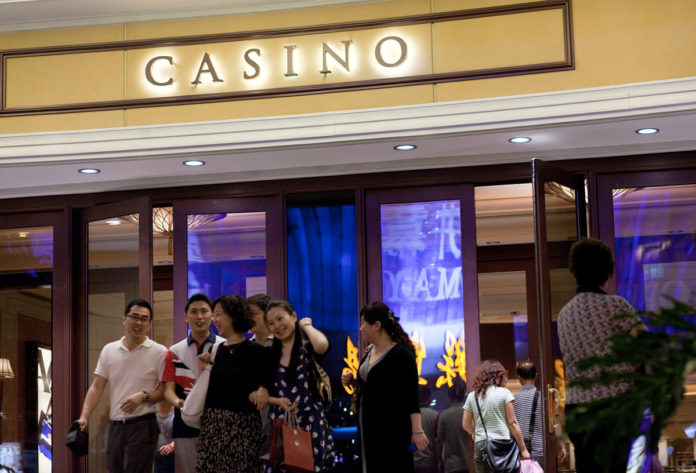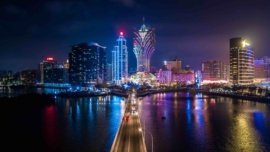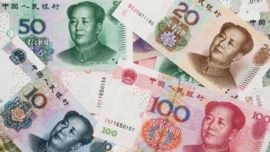Macau’s Five-Year Development Plan states that non-gaming revenue for the gaming operators should account on average for at least 9 per cent of all revenues by 2020.
The forecast – hardly ambitious – was reached five years earlier: in 2015, the six major gaming operators in Macau saw their overall adjusted non-gaming income account for 9.39 per cent of their total revenue.
According to the Statistics and Census Bureau report for 2015, when non-gaming services offered through the participation of gaming activities either free of charge or discounted are included the gaming operators, in fact, earned MOP23.91 billion (US$2.99 billion) in the non-gaming area in 2015, indicating an increase of 2.68 percentage points year-on-year in terms of the ratio of total revenue.
[These adjusted figures show that hotel services contributed 41.2 per cent, followed by food and beverage at 23.4 per cent, and retail at 22.4 per cent].
Having reached the goal much earlier than expected, no-one else has touched upon the subject – and no new limit has been set.
No wonder, therefore, that it went virtually unnoticed that in 2016 the value of non-gaming continued to rise, although less year-on-year.
According to the latest data from the DSEC this number now stands at MOP26.68 billion, which translates into 10.6 per cent of total revenues [in December we will know the 2017 numbers].
The question at this point in time may well be this: imagining that the percentage of non-gaming continues to rise one point per year, it may be in the 14 or 15 per cent range by 2020. Is this good?
“If tourism policies are not advanced, then I feel progress [in non-gaming] will continue to be slow in the next five years” – Glenn McCartney
On the one hand, there is the Las Vegas benchmark, where 65 per cent of casino revenue is derived from non-gaming. Does anyone believe that Macau will reach this level in the next 20 or 30 years? But closer to home there is another market of reference: Singapore (25 per cent of total combined revenue).
“Singapore actually had 40% of the integrated resort tender scoring based upon tourism development. That the organisations that awarded the casino concession (eventually MBS and Resort World) could continue to develop Singapore’s tourism and issues such as leisure and MICE. The whole area around MBS was master-planned as well from a residential, leisure, business district [perspective]. Macau lacked both of these [dimensions],” tourism researcher Glenn McCartney told Macau Business. “I wouldn’t be so ambitious as to say 60 per cent non-gaming and 40 per cent gaming. Probably I would be a little bit more conservative, going for a 40-60 split in terms of 40 per cent for non-gaming and 60 per cent gaming in the medium term,” Maria Helena de Senna Fernandes, director of the MGTO, said last month.
Mr. McCartney, Associate Professor of International Integrated Resort Management at the University of Macau also understands that “without sensible tourism policies, processes and infrastructure there will not be an effective transition to non-gaming diversification or quality visitation and in how the city deals with low season periods.”
 But can things change?
But can things change?
”If tourism policies are not advanced, then I feel progress will continue to be slow in the next five years,” he continues. “Sure, there will be incremental steps to non-gaming development by virtue of having these large integrated resorts with the many non-gaming amenities, but in the absence of advancing much of the dated legislation and procedures [tourism, labour, licensing for example] and lack of public and private sector consensus on either a common city brand strategy or actionable tourism master plan then my rationale will hold.”
A report this year from Morgan Stanley gives other examples of atrophies (or structural issues) in the diversification plan of the local economy: while “most of the companies carry EBITDA [earnings before interest, taxation, depreciation and amortisation] margins of about 10 per cent for VIP, 30 to 40 per cent for mass and 30 to 50 per cent for slots, for non-gaming, retail rental carries the highest EBITDA margin of 75 per cent.”
The Morgan Stanley report adds that “other segments are mostly below 35 per cent or sometimes close to zero.”
From Macau’s Five-Year Development Plan
“We will strive to increase the proportion of revenue from non-gaming business to total revenue from gaming operators to 9 per cent or above. We will facilitate a gradual increase in revenue from non-gaming sectors, including wholesale and retail, hotels, food and beverage, construction, and finance, and further leverage the synergy between gaming and non-gaming industries.
We will protect small and medium-sized enterprises amidst the urban development, and facilitate upgrading and transformation of businesses. We will achieve preliminary success in developing conventions and exhibitions, Chinese medicine, and cultural and creative industries, and will explore ways to develop specialised financial services.”
























